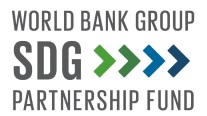WOMEN-OWNED BUSINESSES AND THE SUPPLY CHAIN
TOOL SUITE 2
WHAT’S IN THE TOOL SUITE?

Benefits of Women-Owned Businesses in the Supply Chain
GENDER DIVERSITY SUPPORTS THE BOTTOM LINE AND LOCAL ECONOMIES

TOOL SUITE 2
HOW TO USE THIS TOOL SUITE
How Diverse is the Existing Supply Chain?

- Conduct a Self-Assessment to assess gender gaps in the company supply chain and understand any internal limitations or opportunities to improve gender diversity.

How To Make the Supply Chain More Inclusive?

- Lay the groundwork by defining ‘women-owned businesses’ and establishing eligibility parameters.
- Develop a coherent business case to present to company management.
- Establish procedures and policies, including a code of conduct for increasing supply chain gender diversity.
- Develop a comprehensive gender diversity supply chain program.
- Support capacity building of women-owned businesses through programming.
- Develop coaching programs to support female business owners.
- Municipal leaders should also consult city-specific guidance on increasing engagement with female suppliers.

How To Know if the Supply Chain is Becoming More Gender Inclusive?

- Monitor and track progress in the growth of women-owned businesses in the supply chain.

Fast Facts
GENDER DIVERSE SUPPLY CHAINS
 25%
25%
Source: IFC
 133%
133%
Source: IFC
 23M
23M
Source: Business Wire
 2x
2x
Source: Deloitte
 58%
58%
Source: Niethammer
 12%
12%
Source: Deloitte








